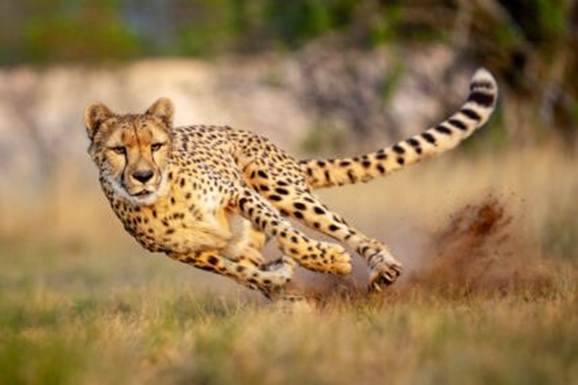Project Context and Strategic Relevance
- The Cheetah Reintroduction Project is the world’s first intercontinental large carnivore translocation effort, aiming to restore ecological balance by reintroducing Asiatic cheetahs (extinct in India since 1952).
- It serves as a soft power instrument, enhancing India’s conservation credentials and diplomatic presence in Africa.
- The project aligns with India’s “Act Africa” policy, expanding bilateral ties beyond trade to include biodiversity cooperation.

Relevance : GS 2(International Relations), GS 3(Environment and Ecology)
Bilateral Dynamics with Key African Nations
1. South Africa – A Technically Strong But Politically Shifting Ally
- India signed a 5-year MoU with South Africa in 2022, facilitating the transfer of 12 cheetahs and ongoing veterinary/technical support.
- A post-election regime change in 2024 has led to bureaucratic reshuffling; new officials are reviewing the MoU’s scope and implementation.
- South African wildlife scientists remain engaged, but policy continuity has stalled, creating a diplomatic deadlock flagged in recent NTCA meetings.
- South Africa’s expertise in predator translocation (e.g., lions, leopards) makes it a vital partner, not just a source country.
2. Botswana – A Steady Contributor Despite Regional Volatility
- Botswana has formally committed to sending 4 cheetahs; timelines under discussion.
- With robust wildlife governance and lower political churn, it offers stability and institutional clarity.
- The diplomatic success here reflects India’s proactive engagement and Botswana’s confidence in India’s management of the Kuno habitat.
3. Kenya – A Long-Term Strategic Investment, Not Immediate Source
- No cheetahs yet; focus is on capacity-building, exchange programs, and institutional cooperation (e.g., ranger training, habitat design).
- An MoU expected in March 2025, but talks have remained generic and non-committal regarding cheetah numbers or timelines.
- Kenya’s world-leading expertise in large predator ecology (e.g., Masai Mara) makes it valuable for long-term ecosystem resilience efforts in India.
4. Tanzania and Sudan – On the Radar, but No Formal Engagement
- Steering Committee minutes referenced possible future ties with these nations, but NTCA later clarified no formal progress or MoUs.
- Sudan’s internal instability and Tanzania’s regulatory rigidity pose diplomatic and logistical hurdles.
Institutional and Administrative Coordination
- The National Tiger Conservation Authority (NTCA) is the nodal agency overseeing negotiations, backed by India’s embassies and the Ministry of Environment.
- Madhya Pradesh Forest Department officials have been deployed as field-level diplomats — visiting South Africa to assess protocols, address technical gaps, and pitch India’s preparedness at Gandhi Sagar (future release site).
- Cheetah Project Steering Committee led by Dr. Rajesh Gopal is monitoring international engagement, domestic habitat readiness, and mortality audits.
On-ground Challenges and Ecological Imperatives
- Kuno has witnessed multiple cheetah deaths, raising questions about habitat capacity, prey base, territorial behavior, and disease control — making the need for fresh genetic stock urgent but cautious.
- Experts have raised concerns about carrying capacity saturation, leading to discussions on alternative sites like Gandhi Sagar and Nauradehi.
- Logistical complexities include quarantine protocols, air transport regulations, and veterinary clearances across jurisdictions — all dependent on tight diplomatic synchronisation.
Geopolitical and Developmental Linkages
- The cheetah diplomacy adds to India’s development partnerships in Africa, complementing solar energy (ISA), vaccine diplomacy, and digital skilling programs.
- Africa’s trust in India’s conservation approach bolsters broader South-South cooperation models where biodiversity is a shared priority.
- India’s ability to sustain this project through political transitions abroad reflects a maturing global conservation leadership role, akin to its tiger conservation narrative under Project Tiger.



